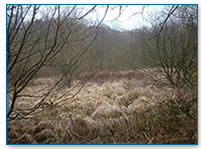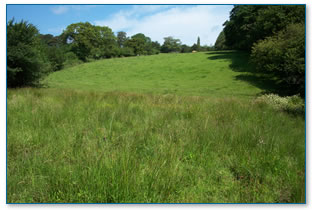case
study - industry - an abbattoir
 |
Wetland - Culm
grassland
R. Lew catchment |
An abattoir, where meat from
farms is handled, was situated near the river. The floors were routinely
washed and the dirty water ran into the surface drains. Nobody gave
much thought to where the drains led - in this case the drains went
straight into the nearby river.
The dirty water, as you can imagine,
contained a lot of blood. Blood absorbs oxygen and so it took oxygen
that was in the river. But the oxygen in rivers is needed to support
animal life like fish and water dwelling mini-beasts. These creatures
fill important roles in food chains that involve many other animals
(see
B06d).
In the section of river that
was polluted by the abattoir it was noticed that the quantity of
mini-beasts was few, and that only mini-beasts that didn’t
need very much oxygen could survive. The red chironomid midge larvae
is an example of a mini-beast that can survive with low oxygen levels,
but other mini-beasts like the dragonfly nymph are not quite so
lucky.
 |
Footslope wetland, Inny catchment
|
To prevent pollution occurring
in the future the water that is used to wash down the abattoir now
goes through a separate waste system instead of a surface drain
that empties into the river. Chemicals are used to treat the water
in the waste system until it is at a standard that the Environment
Agency will allow to go into the river.
Reed beds are also used to improve
the quality of the water before it goes into the river. Reed beds
act as a natural buffer (a stopper), cleaning the water of pollutants.
Wetlands which offer a home to reeds, grasses, sedge and many other
important species of plants (and animals) are often recommended
as the best way to breakdown pollutants before they reach a river
(refer to L06j wetlands & L06f
buffer zones).
|

